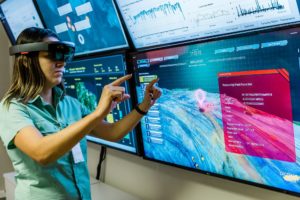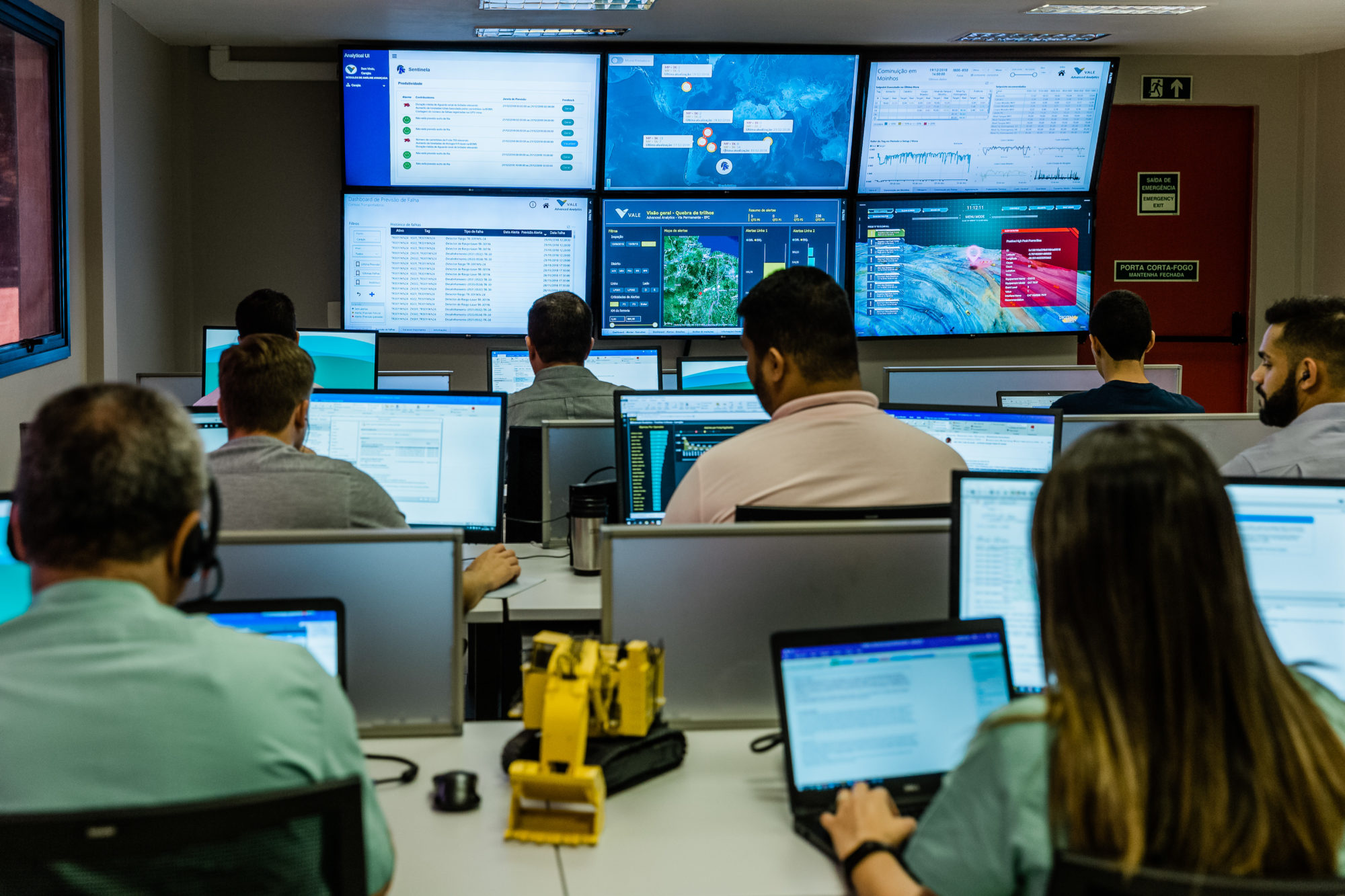Vale’s is today inaugurating its Artificial Intelligence Center in Vitória (Espírito Santo state, Brazil), a centre aimed at improving maintenance, processes, and environmental, health and safety compliance controls.
The facility, which will develop and monitor AI initiatives from the company’s units across several countries, has already saved the company more than $20 million/y, and another $37 million is expected to come from initiatives already underway.
“The benefits derive from improving maintenance of assets (from off-highway trucks to railroad tracks), improving management of processes in pelletising and ore processing plants, as well as enhancing environmental, health and safety and compliance controls,” Vale said.
Hélio Mosquim, the IT Innovation executive manager, said the new centre will “intensify the integration and collaboration” among those people responsible for different projects.
“Also, this initiative will promote the exchange of experiences and knowledge, increasing synergy among teams and generating results on a global scale. Most features developed for one project can be applied to others,” he said.
The centre is located at the Tubarão unit, in Vitória, which comprises eight pelletising plants, the operational centre of Vitória Minas railroad, and four port terminals distributed across 14 km². Some 50 professionals – including data scientists and engineers as well as business experts – are exclusively dedicated to Vale’s AI projects. Vale has 15 of them working at the new centre to support thousands of assets (such as trucks, excavators, trains, conveyor belts, etc), among other tasks.
“Broadly speaking, AI is the ability of machines to simulate the human decision-making process and perform complex tasks normally requiring human intelligence,” Vale said. “It is part of a variety of systems – from those used for recommendations on shopping sites to stand-alone cars. Vale uses AI systems to collect and analyse millions of data from its projects, generating insights that will help predict problems and influence decision making.”
Vale’s teams are currently working on 13 lines of projects carried out alongside some of the company’s corporate and business areas covering ferrous metals, base metals, and coal.
Vale’s Digital Transformation Director, Afzal Jessa, said: “artificial intelligence has the potential to generate value for all business areas of the company. We’re taking another important step towards digital transformation to increase productivity and operational efficiency, achieve the highest levels of health and safety, improve our financial performance and drive innovation.”
Vale’s digital transformation programme is expected to generate gains in all business areas. In iron ore, in particular, it shall reduce the cost of production by $0.50/t until 2023.
The programme is based on improving asset performance, optimising maintenance, increasing workforce efficiency, and integrating the value chain. Technological innovations developed by the company include the Internet of Things, AI, mobile applications, robotisation and autonomous equipment (such as trucks and drills).
Vale outlined six examples of projects being developed in the new centre:
- Rail fracture prevention – One of the high-impact projects being developed at Carajás railroad (Estrada de Ferro de Carajás) is focused on predicting rail fracture, which is one of the most common occurrences and most serious for the operation. Data generated by the railroads uncovered a solution that identifies the occurrence of one or more fractures in a specific rail branch. In addition to increased operating security, the solution decreases railroad shutdowns to repair fractured rails.
- Train wheel-set maintenance – A set of sensors installed by the railroad called waysides monitor the wear as well as impact of wheel-sets, temperature and noise of bearings, as well as displacements of the bogie (an important part of the railroad car). By cross-checking the data generated by these sensors with information from other systems, mathematical models were created to allow the maintenance team to predict the behaviour of wheel-sets in the following 30 days. Based on this information, the team can plan the purchase and maintenance of assets, thus extending their useful life. In the first year, the programme generated savings of BRL2.3 million ($624,019) – about 10 times the amount invested in its implementation.
- Maintenance of mine assets – Collection of data generated by mine equipment, such as off-highway trucks, excavators and loaders, as well as use of AI techniques. A project implemented at Salobo mine, in Pará, increased the useful life of off-highway truck tires by approximately 30% in one year. These projects have produced $8 million in savings.
Another project addresses the increase of useful life and prevention of premature failure of powertrains on off-highway trucks and other mobile assets of the mine, such as loaders and excavators. This is one of Vale’s major projects, involving 15 operations in Brazil, Canada and Mozambique. Sixty per cent of the company’s off-highway trucks already use this system. The approved potential of savings amounts to more than BRL2 million. - Reduction of fuel consumption – A partnership between Vale’s operational areas and researchers of the University of Queensland, Australia, helped the company’s data scientists develop a system to reduce the fuel used by off-highway trucks. Tests conducted in the state of Minas Gerais showed the project can potentially reduce the diesel consumption.
- Pelletising process optimization – Data generated during production of pellets were analysed using AI techniques and generated several insights as well as recommendations on ideal operational conditions for the pelletising plants. These process improvements generated $3 million in savings per year in one of the plants, in Vitória. The gains came from a 7% reduction in variable costs by improving the balance between the coal and natural gas used in the process and reducing the use of electric power, among other factors.
- Data analysis to avoid safety incidents – Started in 2017 in partnership with the health and safety area, the project analyses the demographic profile of employees to evaluate which ones are more exposed to accidents. The data generated is combined with historical accidents, near misses, and unsafe conditions of the localities. The system uses this information to calculate the probability of incidents occurring in each area in a specific period of time – in a week, for example – as well as its current risk, enabling to evaluate whether the employees’ risk exposure in the work environment has increased or decreased. Then, it is possible to prioritise the activities of health and safety professionals.











